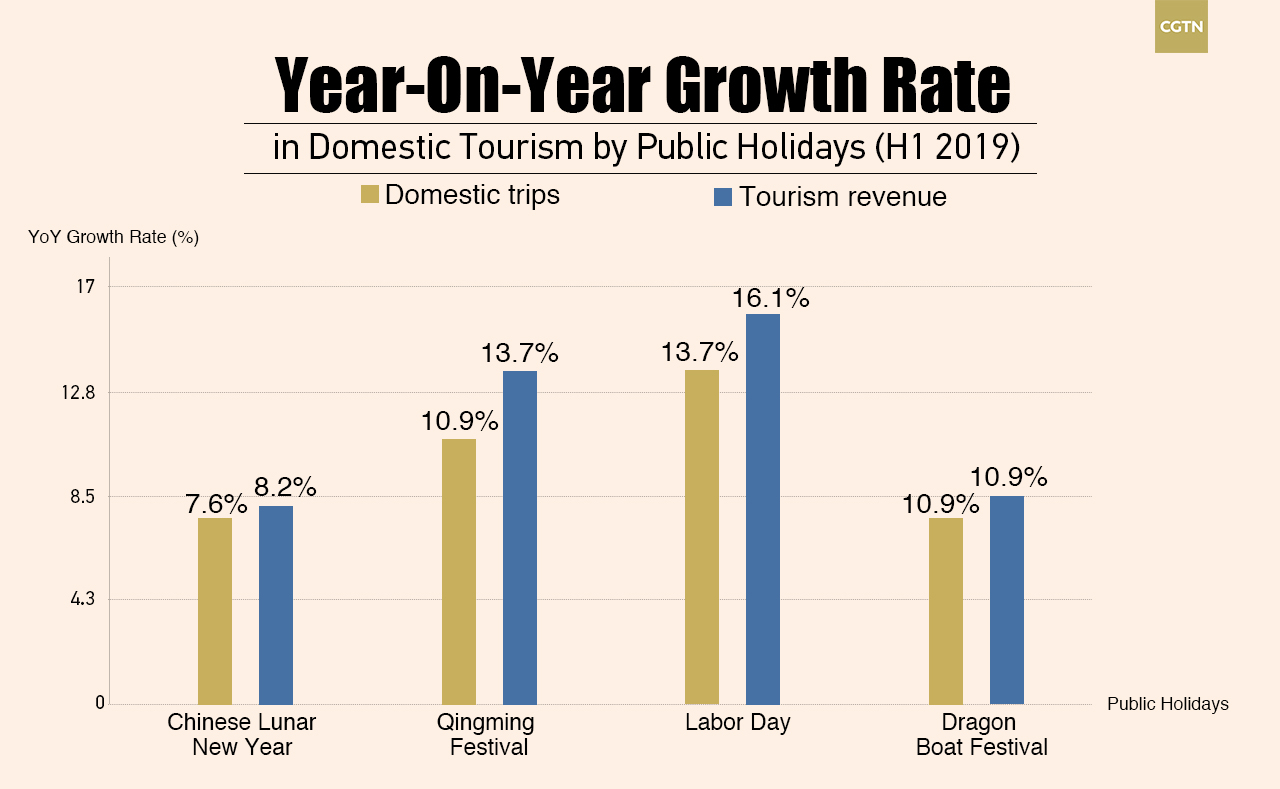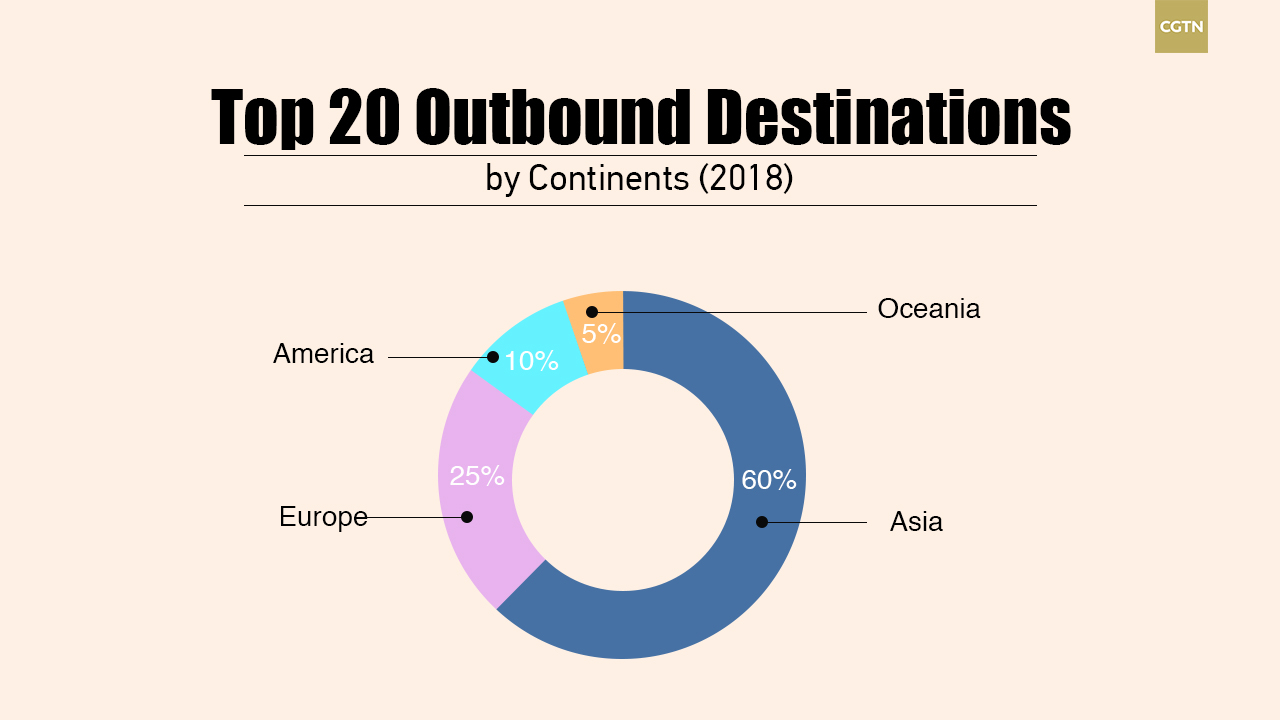

An estimated 3.08 billion domestic trips were made in China in the first half of 2019, contributing to a total of 2.78 trillion yuan (399 billion U.S. dollars) in revenue, according to the report released by China Tourism Academy on Thursday. Both indicators show a year-on-year increase of 8.8 percent and 13.5 percent, respectively.
High-speed trains and road trips are getting popular with tourists to get to nearby destinations within three hours, according to the report. Also, traveling during public holidays has become a new "custom." Expenditures at museums, historic and cultural sites, as well as red tourism sites, surged over 20 percent during the past holidays.

CGTN Infographic
Inbound tourism also witnessed steady growth. The number of inbound tourism trips reached 72.69 million, generating 64.9 million U.S. dollars in international tourism revenue. The number of trips and revenue increased five percent year on year.
Chinese mainland received an increasing number of visitors from its regions Hong Kong, Macao and Taiwan, as well as foreign visitors from Russia, Malaysia, South Korea, Thailand, and Indonesia, according to the report.

A foreign tourist visits one of the stores in Tianzifang, east China's Shanghai, June 29, 2019. /VCG Photo
The outbound tourism in the first half of 2019 recorded 81.29 million trips, showing a 14 percent growth year on year. Many Asian countries are among the most-visited outbound destinations with the Belt and Road countries in east Europe drawing more and more Chinese tourists. Around three million trips were made to European countries in the first half-year, up 7.4 percent.

CGTN Infographic
It is also expected that the use of 5G and other innovative technologies will bring more positive changes to the culture and tourism sector, according to the report.
(Infographics designed by Jia Jieqiong)

Copyright © 2018 CGTN. Beijing ICP prepared NO.16065310-3
Copyright © 2018 CGTN. Beijing ICP prepared NO.16065310-3